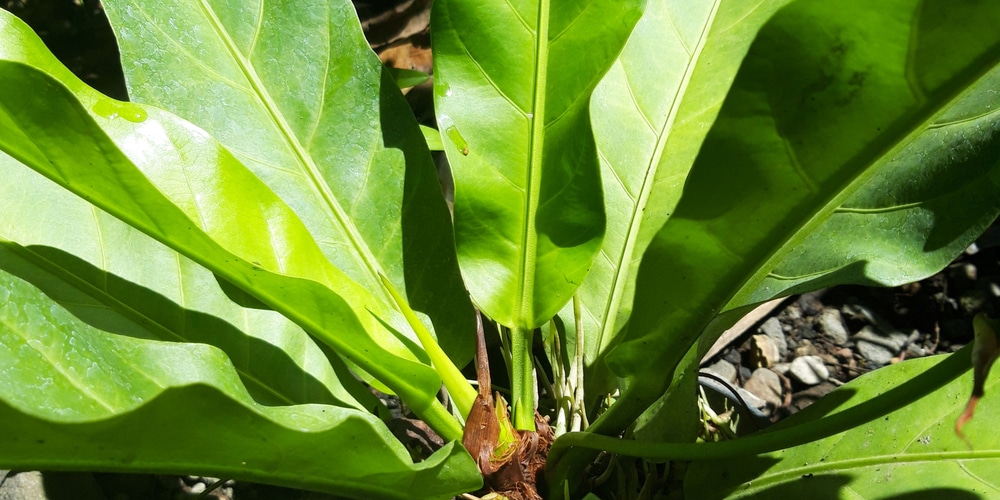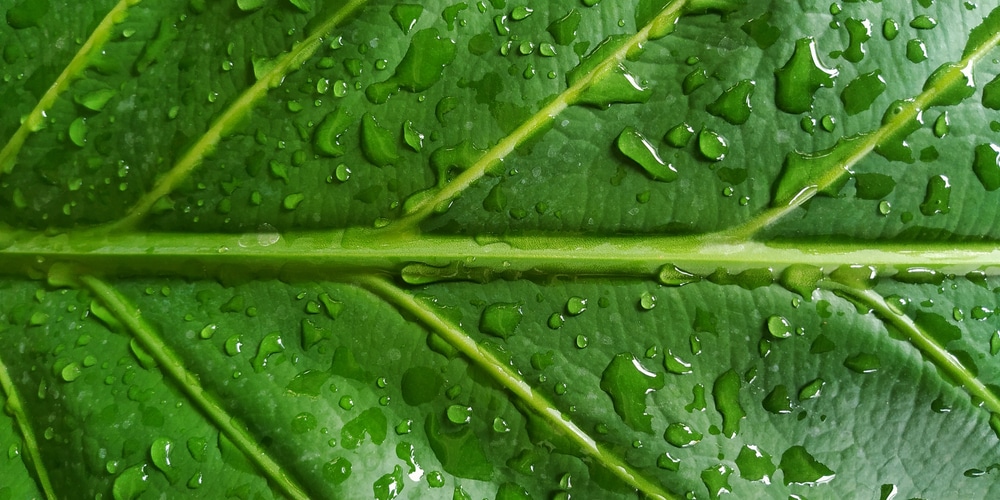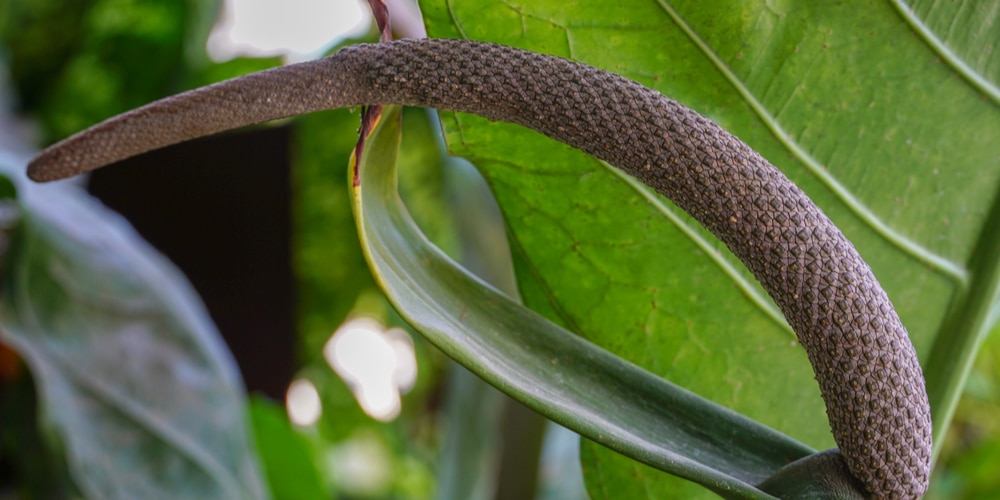There are plants that are notable for their colorful and fragrant flowers. There are plants that are already beautiful even with just their lush, green leaves, and the Anthurium Superbum, which is also known as the Bird’s Nest Anthurium, belongs to this group. What makes this plant beautiful is its unique foliage. The Anthurium Superbum has long, elliptical leaves that give off a pre-historic jungle vibe.
This is the best houseplant for an indoor jungle. However, the plant is very picky about its growing conditions. Anthurium Superbum can grow outdoors, but it is typically grown as an indoor plant. When grown as a houseplant, the Anthurium Superbum requires particular care needs. If caring for an Anthurium Superbum plant is also your struggle, then this article is for you.
- Botanical Name: Anthurium Superbum
- Common Name: Bird’s Nest Anthurium
- Plant Type: Perennial
- Flower Color: white or pink spadix capped by a dark, burgundy petal
- Size When Mature: 12-18 inches
- Bloom Time: year-round, up to 6 times a year, flowers can last up to 3 months
- Sun Requirements: Bright, indirect light
- USDA Hardiness Zone: 10 to 11
- Soil PH Range: Acidic, 5.5 to 6.5
- Soil Type: Rich, moist, well-draining
- Water Needs: Average
- Native Area: Ecuador
What You Need to Know About Anthurium Superbum
Anthurium Superbum was first discovered in 1967 when a team of American botanists arrived on the banks of the Rio Napo in Ecuador, South America. The Anthurium Superbum is remarkable for many things. When the Anthurium Superbum reaches maturity, its leaves form a rosette pattern.
This simply means that as the plant grows, its leaves cluster in a circular pattern. This growth habit makes the Anthurium Superbum a perfect nesting place for birds, thus the name “Bird’s Nest Anthurium.” Anthurium Superbum has long, elliptical green leaves with a dark purple back. They can grow up to 3-5 feet.
The plant also blooms unusual-looking flowers year-round that are fragrant enough to attract pollinators. The flowers can last up to 3 months, and the plant can produce flowers six times per year.
Anthuriums are best grown indoors where you can control the environment to how the plant likes it. It may be picky with the lighting, humidity, and temperature, but once you provide the appropriate growing conditions, the plant will just require minimal attention. You just have to keep the plant away from pets and children because it’s toxic to them.
How to Care for Anthurium Superbum
Anthurium Superbum can only be grown outdoors if you live in USDA Hardiness Zones 10 to 11. Being a tropical plant and growing in moist lowland forests, Anthurium Superbum cannot tolerate dry environments or cold temperatures. Just knowing this will already let you have a thriving Anthurium Superbum houseplant. Here are specific growth requirements for Anthurium Superbum.
Light
Anthurium Superbum doesn’t like a planting location that receives full sun from morning till afternoon. When you expose the plant to intense direct sunlight, it will scorch the leaves and damage the plant. Anthurium Superbum lives in the rainforest where it is shaded by tall trees.
You only need to provide bright, indirect sunlight for the Anthurium Superbum to produce healthy green leaves. The lighting requirement is also the main reason why Anthurium Superbum is best grown indoors because you have full control of the light. You can put the plant on an east-facing window and just relocate it when the afternoon sun becomes too hot for them to handle.
Water and Soil Needs
Water the Anthurium Superbum once a week or once the soil becomes dry. This plant cannot tolerate dry conditions. When you water the soil, the plant will gain moisture. However, avoid overwatering because it can cause root rot and other plant diseases.
Since it takes too long for the moisture to dry up in winter, it is best to water the plant only when the soil looks dry. The Anthurium Superbum plant requires the soil to be rich, moist, and well-drained. You can mix orchid soil with potting soil to recreate the soil type the Anthurium Superbum thrives in the forest.
Temperature Requirements
If you live in USDA hardiness zones 10 to 11, you can easily grow Anthurium Superbum outdoors, even in the ground. Just make sure that they are shaded from the sun. But if you live in a region where winter temperatures can drop to as low as 20 degrees F, it is better to grow the plant inside the house where you can easily control the room temperature.
Anthurium Superbum thrives in temperatures between 65 and 75 degrees F. When the temperature drops below 55 degrees F, the leaves of the plant will start to turn yellow.
Fertilizer
The Anthurium Superbum plant needs help in improving the phosphorus content of its soil. Do not focus on the nitrogen or potassium content of the fertilizer. Instead, choose a fertilizer that has higher levels of phosphorus. You can put in orchid fertilizer every 3 to 6 weeks.
Or if you want an all-purpose fertilizer, you can feed the plant with it every 6 to 8 weeks. The plant only needs a little fertilizer each time during the growing season and not on a regular basis. You also don’t need to use fertilizer in the winter months.
Common Diseases
Common pests for Anthurium Superbum include mealybugs, spider mites, scale, and thrips. But with the thick leaves of the plant, these pests only cause little damage to the plant. You can also easily get rid of these harmful insects with the use of soap, water, and horticultural oil. The plant can also suffer from browning or yellowing of leaves, and this can happen if you neglect the plant’s growth requirements.
Propagation
Propagation by seeds is difficult and, most of the time, not effective. The best way to propagate Anthurium Superbum is by division, and the best time to do this is when you repot the plant in spring.
Gently take the plant out of the pot. Untangle the roots and separate the sections that you want to replant. After this, you will end up with two plants or more. Replant the divided plants in a proper container with well-drained, moist soil. Provide the plants with their growth requirements for them to thrive and get established. You can fertilize the plants after 6 weeks of transplanting them.
Pruning
Pruning is not necessary for the Anthurium plant because the leaves don’t grow that long and they grow in an orderly manner. However, pruning is advised when you spot diseases, discolored or dead leaves. Pruning will improve the overall appearance of the plant.
It can also encourage new growth. Just make sure that you use gloves when pruning because the leaves can irritate your skin. Also, wipe down the scissors with rubbing alcohol before you use them to prune the plant. This will prevent infection.
Related Article: Is an Anthurium Toxic to Cats?


